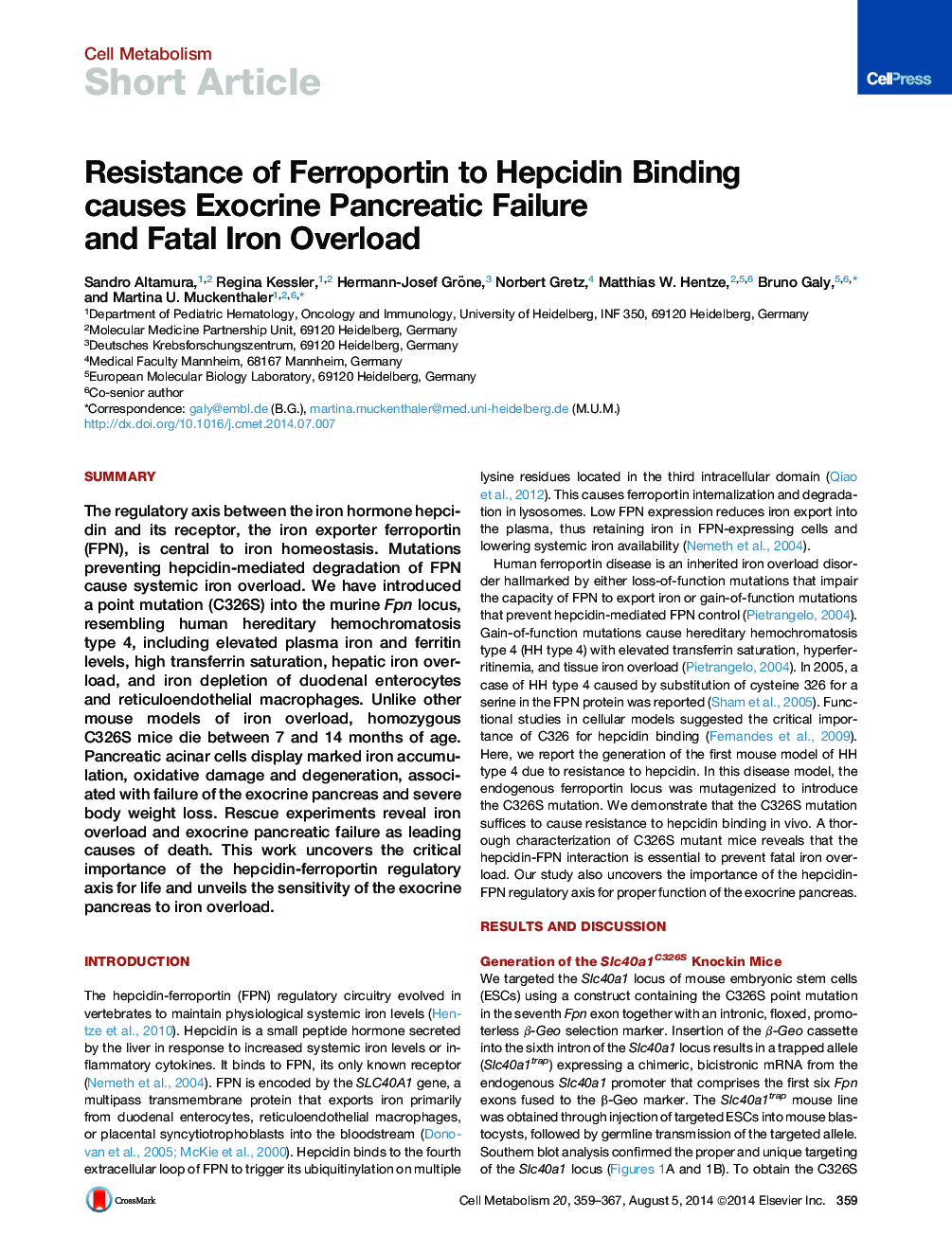| Article ID | Journal | Published Year | Pages | File Type |
|---|---|---|---|---|
| 2792611 | Cell Metabolism | 2014 | 9 Pages |
•The Slc40a1C326S mutation causes resistance to hepcidin binding in vivo•FPN resistance to hepcidin leads to severe iron overload in vital organs•Iron overload causes failure of the exocrine pancreas, wasting, and eventual death•C326S FPN mutant mice offer the first mouse model of fatal dietary iron overload
SummaryThe regulatory axis between the iron hormone hepcidin and its receptor, the iron exporter ferroportin (FPN), is central to iron homeostasis. Mutations preventing hepcidin-mediated degradation of FPN cause systemic iron overload. We have introduced a point mutation (C326S) into the murine Fpn locus, resembling human hereditary hemochromatosis type 4, including elevated plasma iron and ferritin levels, high transferrin saturation, hepatic iron overload, and iron depletion of duodenal enterocytes and reticuloendothelial macrophages. Unlike other mouse models of iron overload, homozygous C326S mice die between 7 and 14 months of age. Pancreatic acinar cells display marked iron accumulation, oxidative damage and degeneration, associated with failure of the exocrine pancreas and severe body weight loss. Rescue experiments reveal iron overload and exocrine pancreatic failure as leading causes of death. This work uncovers the critical importance of the hepcidin-ferroportin regulatory axis for life and unveils the sensitivity of the exocrine pancreas to iron overload.
Graphical AbstractFigure optionsDownload full-size imageDownload high-quality image (161 K)Download as PowerPoint slide
